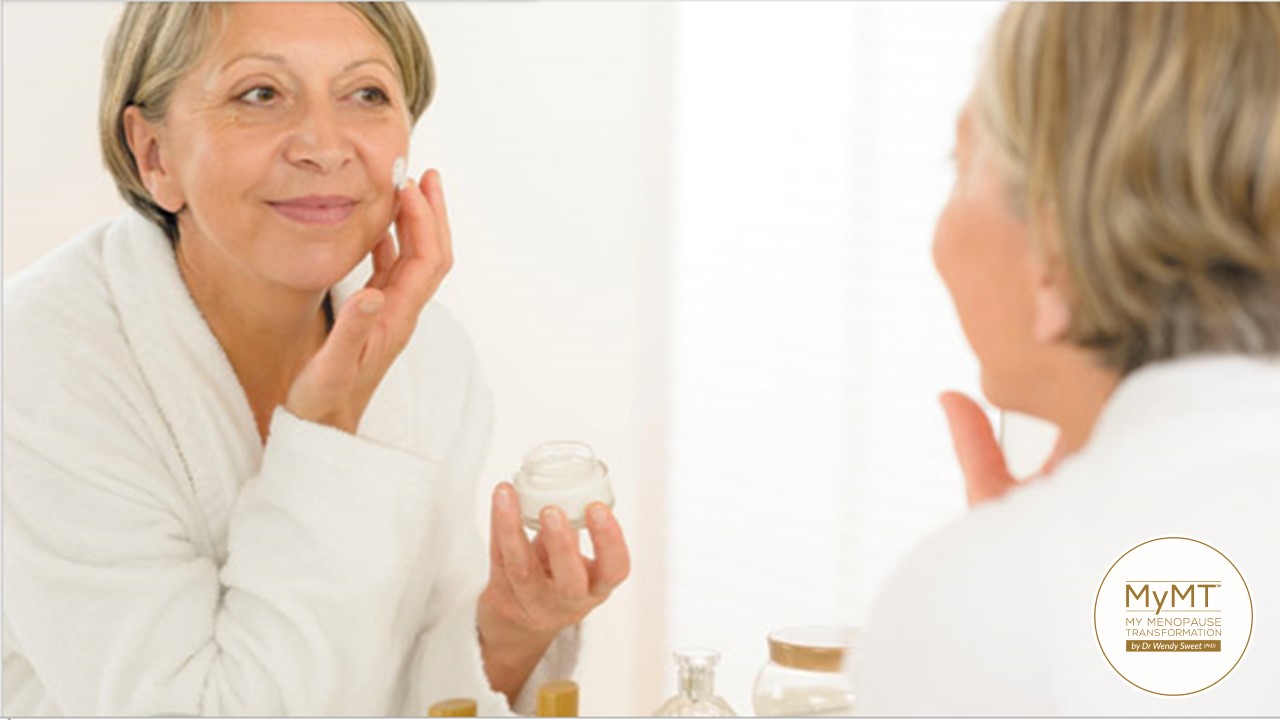“What’s is it with all the itching and tingling of my skin?” Keighley said as she delivered my coffee. As one of my most favourite barista’s Keighley knows that I ‘talk menopause’, so she knew that I would have an answer for her.
For some of you in your early 50’s , it gets incredibly dry. For others of you, it gets ‘crinkly’ or ‘crepey’. Some of you are driven crazy because your skin starts to itch. Some of you even develop eczema. Many of you notice the dark spots arriving more rapidly too.
As we transition menopause, our hot flushes, poor sleep, anxiety and mood swings are often the only symptoms that we focus on. very few of us realise that as oestrogen lowers, our skin is changing too. And according to the research that came out of the University of Otago in New Zealand, we should all have a bit more focus, not only on Vitamin D, but on the powerful influence of Vitamin C. [Pullar, Carr & Vissers, 2017]. Not only do we need Vitamin C inside us through beautiful fruits and vegetables, but according to this research, Vitamin C applied on the skin through fermented papaya, can also help your skin to help you as you age.
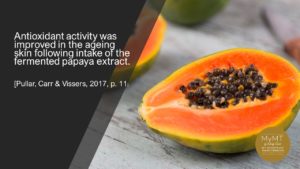
At a time when we are all becoming more conscious of how we look after ourselves during a pandemic and learn to better protect our immune health, then there’s no better time to talk about the skin. Especially as we move into and through menopause. This is the time of our lives when our skin is changing due to hormonal changes that are as powerful as when we went through puberty. How could we not remember the angst of acne?
With the main changes to our skin occurring in puberty, it’s little wonder that at the other end of the reproductive life-stage, our skin is changing again.
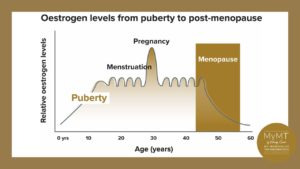
When we came through puberty, I think many of us remember the proliferation of oiliness on our skin, that appeared almost overnight, setting the stage for acne. Now that we’re at the other end of our reproductive journey, our skin is changing again. And we we move between the seasons, our skin is subject to seasonal changes too.
So, to help our symptoms in menopause, it’s important that we focus on what’s going on with this beautiful organ. Afterall, it’s the largest organ you have – covering approximately 2 square metres, weighing approximately 3.6kg, it pays to look after it. Afterall, it needs to do it’s job of protecting your immune health for quite a few years ahead.
The primary function of your skin is to act as a barrier against insults from the environment. Its unique structure reflects this and it’s why it has a vital role to play in our immune system. For women transitioning menopause, it is well known that this stage of life is a vulnerable time for immune health. My view is that we grossly underestimate its function and role as we move into the next stage of life. Please don’t smear it in the potions that are marketed to us as anti-ageing remedies – that’s not what it needs. I’ll tell you why…
Our skin has two layers:
- the epidermal outer layer is full of keratinocytes. This outermost layer is your waterproof raincoat barrier. It contains lots of structural proteins called keratin cells. These cells are important, because they also ‘talk’ to your immune system and they do this with the help of oestrogen.
- the inner dermal layer gives our skin strength and elasticity. This layer also gives nutritional support to the outer layer – the epidermis. This nutritional support needs high concentrations of Vitamin C.
If your skin has been itchy and irritating you or it has turned incredibly dry (have your heels got cracks in them like the Grand Canyon?), then menopause is the time of your life when you need to consider the nutrients in your diet. Dry skin is a common condition typically experienced by most people at some stage in their lives but none more so than in menopause. The prevalence of dry skin increases with age and menopause is the biological gateway to our ageing. So, whilst dry skin was originally believed to be due to decreased water content or sebum production in the skin as we get older, it’s now considered likely to be due to alterations in the keratinisation process and fat content of the layer under the skin. It’s why “beauty from the inside”, via nutrition, may be more effective than topical application. Look at Debb, who lives up in the Cook Islands and works as an academic – she shared this photo after picking all the tropical fruit from her garden. Her joint health and energy levels have turned around since understanding the relevance of the rich nutrients in the tropical fruits that she is lucky enough to have on her doorstep.

Improving your Vitamin C levels as you transition through menopause matters. It hasn’t gone past me that women on my 12 week programmes who change their diet and do some juicing of the specific nutrients I’ve researched, not only mention how much more energy they have, but how their skin has changed too.

Vitamin C and your Skin:
Normal skin contains high concentrations of vitamin C. I wish I’d known this in my mid-late 40’s when I was being influenced by weight loss diets that told me to get off fruit and I was wondering why, when I entered peri-menopause my skin felt itchy – not one health professional I went to mentioned the need for additional Vitamin C with the loss of oestrogen to my skin. As well, being a regular exerciser, my busy life, lack of sleep and a dietary approach of high fat and protein that was being promoted in the fitness industry at the time, led me down the path to worsening immune health, despite thinking that I was doing all the correct things. I didn’t know that it was my skin that also needed my focus to help my immune system. And for those of you in the Northern Hemisphere heading into your summer months, I want you to know that Vitamin C is also needed to assist antioxidant protection against UV-induced photo-damage to your skin as well.
Hindsight is a wonderful thing … as is positioning menopause in women’s healthy ageing research, especially our cardiac and immune health research, which is what I’ve done with the 12 week MyMT™ programmes. For further information about my two different programmes and the savings you receive on these, please follow the Learn More link below.
 For millions of women entering menopause, there is no better time to have a re-think about how we look after ourselves. As I often mention in these articles, menopause is the opposite of puberty. At one end, which is where we all were a few decades ago, we were entering higher oestrogen levels as we began our transition into our reproductive years and at the other end, which is where we are at now, oestrogen levels are naturally declining. This leads to numerous change around our body, not just in our ovaries.
For millions of women entering menopause, there is no better time to have a re-think about how we look after ourselves. As I often mention in these articles, menopause is the opposite of puberty. At one end, which is where we all were a few decades ago, we were entering higher oestrogen levels as we began our transition into our reproductive years and at the other end, which is where we are at now, oestrogen levels are naturally declining. This leads to numerous change around our body, not just in our ovaries.
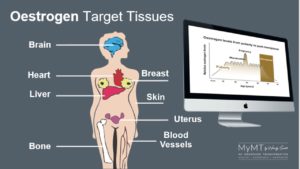
It’s why you may not need HRT, anti-depressants and endless supplements either, and yes I know, these offer numerous women relief, so don’t discount discussing options with your Doctor. However, if these strategies stop working, especially as you move into post-menopause as I found myself, then you need to put on your ‘ageing-hat’ too. This means changing things up a bit with lifestyle strategies that are evidenced against women’s healthy ageing studies. This means examining your nutrition, exercise, sleep quality and yes, your changing immune health and skin health as well. You may well need additional Vitamin C. There’s a reason for this.
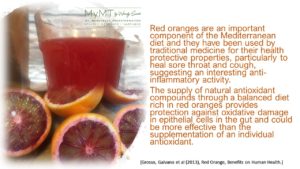
Vitamin C is also known to stimulate collagen production. How are your joints and knees and that plantar fasciitis that is preventing you from exercising and walking? If your joints are bothering you, then please have a read about my stand-alone ‘Restore your Joyful Joints‘ mini-module. It’s available for you as a stand-alone module.

During the course of a normal lifetime, the skin is exposed to a number of challenges that can affect structure, function and appearance. According to the research by Pullar, Carr et al. (2017), these challenges include:
• Deterioration due to normal ageing (please note that I include ‘menopause’ in this category!), contributing to loss of elasticity and wrinkle formation.
• Exposure to the elements, leading to discolouration, dryness and accelerated wrinkling.
• Chemical insults including exposure to oxidising beauty and cleansing products (hair dyes, soaps, detergents, bleaches).
• Direct injury, as in wounding and burning.
We are the first generation to have been exposed to numerous environmental and household chemicals, beauty products and even, lots of high intensity exercise, which damages collagen in our joints. As their research shows, Vitamin C may provide significant protection against these changes. Furthermore, regeneration of healthy skin following decades of insult and injury is a goal for most of us. Like the rest of the human body, the skin is subject to changes caused by the process of natural ageing. All skin layers show age-related changes in structure and functional capacity. Along with changes that occur in other body systems, this may result in increased susceptibility to a variety of disorders
and diseases, such as the development of dermatoses and skin cancer (Pullar et al, 2017).
But there is good news and it’s one I reiterate to women on my 12 week health-coaching programmes. The role of vitamin C in skin health has been under discussion since its discovery in the 1930s as the remedy for scurvy. Hence, over decades, many of the nutrient interventions that showed a benefit to our skin health have included a high intake of fruit and vegetables. These are known to contribute significant levels of vitamin C to the diet.
However, part of the problem is that nutritional guidelines only promote five servings of fruit and vegetables. We are thrown in with the general population. But we are unique! And so is our ageing skin. As we move into our 50’s and beyond and as we lose the role of oestrogen in our epidermis and hence, our collagen production becomes compromised, both healthy ageing and cardiovascular research indicates that we need up to 9-10 servings of fruit and vegetables daily. That’s why so many women on my programmes discover juicing and I have a variety of recipes that are specific to the nutrients we need in menopause. This is one way I teach them how to make simple changes so they incorporate more fruit and vegetables in their lives. Yes, it’s that important.

Vitamin C isn’t the only nutrient your skin needs either. We all know the benefits of Vitamin D, but now that many of you are living inside more during lockdown and the winter has well and truly arrived in the Northern Hemisphere, it’s time to take it more seriously.
Seasonal change is important to not only our skin’s uptake of Vitamin D, but also to other body functions too. Lack of Vitamin D and lack of Vitamin C, causes worsening sleep, high blood pressure, more constricted blood vessels and changing gut health as well. As Linda Geddes mentions in her excellent research book, Chasing the Sun, (Geddes, 2019) following her interview with Dermatologist, Dr Richard Weller, “our skin stockpiles vast quantities of a storage form of nitric oxide, which is activated by sunlight.” (p. 121). With nitric oxide being a potent dilator of blood vessels, Dr Weller explored the relationship between higher rates of cardiovascular disease in people living in higher latitudes with longer winters. As nitric oxide production declines with age, or as we withdraw seasonally from exposure to sunshine (or we withdraw because we are in lockdown), our blood pressure can increase.
I talk about the power of nitric oxide in the MyMT™ programmes too. As we move through our 50’s, our blood vessels constrict more as we lose oestrogen. It’s a problem for women who aren’t recovering well from their exercise, because natural forms of nitric oxide help to dilate our blood vessels and as such, when we don’t have as much production of nitric oxide as we age, we can’t remove the lactic acid as readily as we used to.
This is why I also encourage women to have more celery and beetroot in their diets. These are just two vegetables that help us get nitric oxide sourced from plants into our diet. Exposing our skin to some sunlight (not too much) is another way forward as well. Especially for our energy, skin and wellbeing. Andrea from Australia learnt all this too and I love this photo she sent me of her sitting in the sun outside her small home studio where she paints.
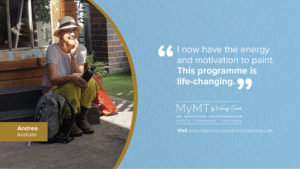
All of our bodily functions work on a circadian rhythm and rely on Vitamin C and Vitamin D levels being optimal.
It’s why as the seasons change, we change too. And it’s why, when we arrive in our menopause transition, we just need to change things up a bit to help our body adjust.
I hope you can join me on your menopause journey too. Select the programme that best suits you. These differ between weight loss (Transform Me) or Circuit Breaker, for thinner, leaner women wanting symptom management.
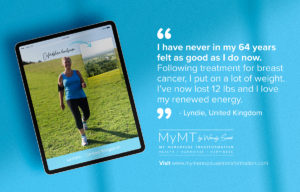
References:
Geddes, L. (2019). Chasing the Sun. [Wellcome Collection], Profile Books:London, UK.
Lymon, M. (2019). The Remarkable Life of the Skin. Bantam Press, Transworld Publishers: London, UK.
Pullar, J., Carr, A., Vissers, M. (2017). The Roles of Vitamin C in Skin Health. Nutrients, 9, 866, 1-27.
Thornton, J. (2013). Estrogens and aging skin. Dermato-Endocrinology (5)2, 264–270.
